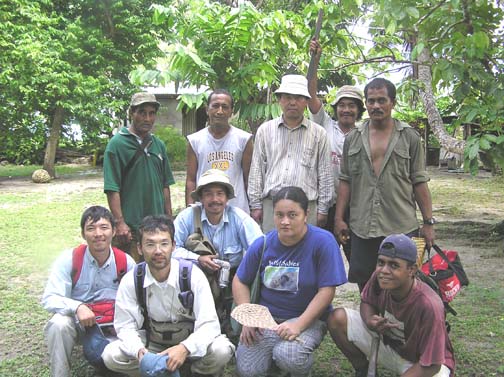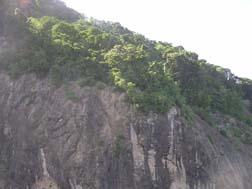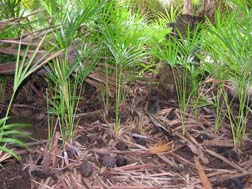|
|
||||||||
|
LäjeRotuma trip to Rotuma, in association with Mie University, Japan and South Pacific Regional Herbarium of the University of the South Pacific. 2-9 September, 2005 The team consisted of Marie Pene (LäjeRotuma), Alivereti Naikatini (plant technician at the Herbarium, USP), and from Mie University: Professor Hero (team leader and agro economist), Professor Chitoshi Mizota (soil science), Hiroshi Naito (assistant, Ph.D. plant physiologist), Takashi Mishima (assistant, Ph.D. food chemistry).
The objective of these Japanese researchers was to conduct research on species of sago palm found growing on Rotuma. That is, to identify populations of sago palms that produce a high volume of quality sago starch and to look at other nutrition-based plants. Sago is locally known as ota.In addition, the Herbarium of the University of the South Pacific carried out a reconnaissance survey to identify potential environmental and biological conservation issues on Rotuma, especially concerning the flora and associated fauna.
During the week-long trip, these researchers identified sago palm case study sites at Itu‘muta, Pepjei and Juju. Two future national heritage sites, Hatana and Uea, were also identified. Two of the team members, Professors Mizota and Alivereti, commented on their interest in the impact that birds had on the soil and plants of Uea and Hatana. Samples were taken from all sites to be tested in Japan at the laboratory in Mie University. All documented findings will be presented to the appropriate body six months after the trip. We expect that the findings will also be communicated to people on Rotuma where samples of sago palms were taken.
The team had the opportunity to give presentations at Juju district, Ahau Government Station and Rotuma High School, describing their work and explaining their interest in Rotuma’s sago palms. It was during such discussions that the value of the sago palm as a resource was explored. Traditionally, the plant’s leaves were used to thatch the kohea (kitchen house) and the starch was used for making fekei. Modern housing materials have generally replaced traditional thatching except for a few households on the island that still have thatched kitchen houses. Concerns were expressed by local people about the destination of samples taken and the need to report the results back to the island community (via the Rotuma Council). Questions were also raised about alternative sources of starch and the many uses of sago. With regards to future national heritage sites, people asked about the type of government assistance that will protect Hatana and Uea and discussed the possibility that there were other sites on Rotuma that might be regarded as heritage sites for Fiji. The views of our Japanese visitors were that Rotuma is indeed a very beautiful island with plentiful resources. It was agreed that research and proper consultation involves all stakeholders, and that this research project will enhance LäjeRotuma Initiative's vision of managing the natural resources of Rotuma effectively for the benefit of the whole island community.
|








